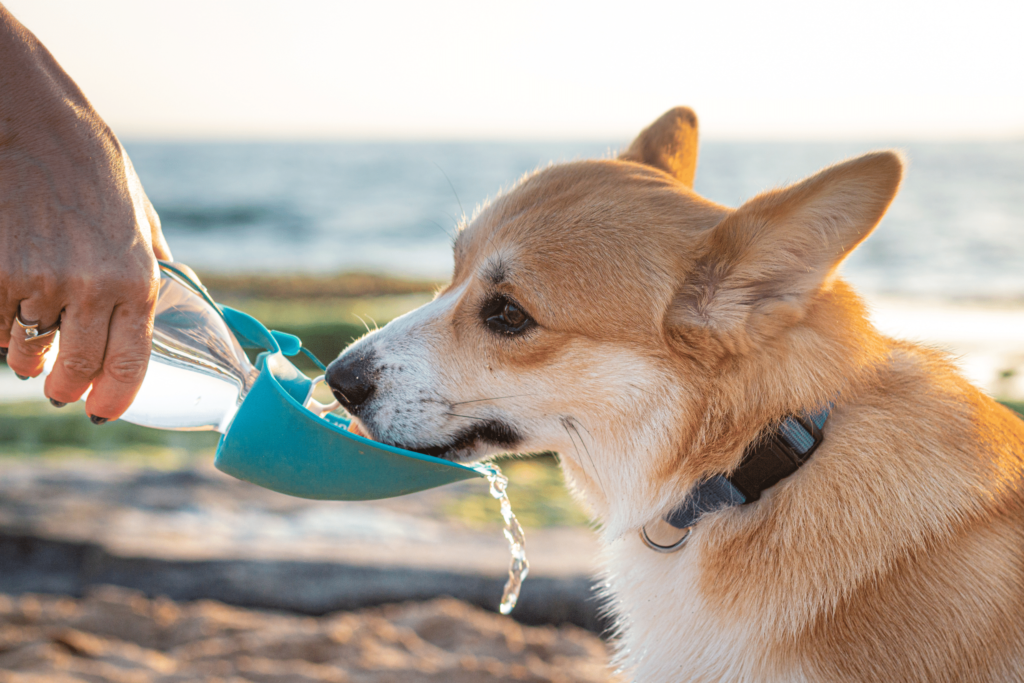Hydration is not just for Summers!
“Stay Hydrated” is the hallmark saying to healthy living for when the weather gets hot and horrid. But we don’t restrict that hydration for summers now, do we? It is well established fact that hydration in pets is primal for our bodies to function efficiently. And as it goes for the human body, the same follows for your button-eyed, furry pal. The animal body constitutes 80% of water, considerably higher than a human body, thus requiring a higher percentage of H2O intake. It’s not protein, carbohydrates, or vitamins but the water essential to your baby’s nutrition. Permeating water in the body accelerates good digestion and aids in the movement of nutrients, in and out of body cells, along with eviscerating many health issues in pets.
How To Detect Signs of Dehydration?
Dehydration can be detected by signs of panting, loss of appetite, fatigue, dry nose and gums, sunken eyes, and grogginess. From being as trivial as urinating, panting, or breathing to medically profound problems, many reasons may give way to dehydration. Heavy exercise, long hours under the heated sun, and humidity can also be borne out, leading to heat stress or stroke. Dehydration can affect your pet’s health in chronic ways, with a burgeoning risk of diabetic issues or organ failure.
Importance of Hydration in Pets
The importance of hydration in pets can be assessed because it maintains and aids the body’s regular function. It helps maintain average body temperature, supports the movement of nutrients, excretion and urination, shoots up activeness, is especially significant for elder dogs, and is an emblem of good health.
As the thumb rule goes, your pet requires ounces of water proportional to their body weight [each pound]. For instance, if your feline friend weighs 15lb, their daily intake should be 15 ounces. The requirement for water varies according to the pet’s size, weight, etc., the presence of diseases can also affect the need for water in a pet’s body.
Instead of rushing off to the Vet after the damage has been done, taking precautions and waving off any health crisis creeping your pet’s way is better. Below are the lists of things you may do to keep those doe-eyes bright and lively.
1. Easy availability is the key
Starting with the basics, make sure you have allowed easy access to fresh water for your pet. Especially when you are going out, check that the water dish or bowl is full of fresh drinking water. Apart from this, the hygiene of dishes is of equal importance, so promptly clean up those bowls to dodge any bacteria or germs. Leaving a bowl of water near your pet is always appreciated if they are having some outdoor fun.
2. Hydrate the food, hydrate the pooch
We, humans, love to throw a good old tantrum when asked to do things that are vital to health. The apple doesn’t fall far from the tree; our pets sometimes take after us in that area. There is a possibility that the pet might scurry away from water; in that case, you can sprinkle some innovation to hydrate your little cub. Introduce wet or canned food to the diet, or add more water to their food. You can also resort to ice cubes, popsicles or frozen snacks to interest things up and keep them healthy. This way, they can hydrate themselves via eating if not drinking.
3. Aye, Aye (drinking) fountain!
Highly acclaimed and recommended to all the pet parents out there, plant a PET DRINKING FOUNTAIN. Pets, cats or dogs are designed to repulse still water out of reflex and prefer running water over that. Getting a pet fountain will increase your four-legged cutesy’s inclination to drink water, as it’s coming straight from the stream or fountain. This method seldom fails it is deemed as one of the most efficient ways to ensure hydration in pets.
4. Bowls- More the merrier
Another easy and effective cheat trick is to devour many corners of your house with multiple bowls. More bowls mean more resources of drinking water which eventually means proper hydration. It might seem like a lot of work; it is not. Placing water bowls at different spots where your pet spends their time will make it easier for them to fetch water whenever. But make sure all of these dishes/bowls are clean and dirt-free.
5. Water up those walks
Our morning runs are empty without that bottle of water. Apply the same ritual to your pet’s walks as well. Whenever you take your pet out, equip yourself with plenty of water and a dish. This way, the baby boo can always stop for a sip after getting parched from all that activity.
Most importantly, it is primal to keep knowledge of your pet’s water requirement; loading them up with more than what’s necessary can be counterproductive and may lead to problems. Dehydration is a gateway for many health issues in your pet, so you must provide them with ample water and nutrition. These tricks and tips will keep them healthy and active by generating a habit of drinking water for your pet. If these ideas are not yielding any substantial results and the signs of dehydration are visible still, then it would be highly advisable to take your pet to the Vet immediately. After all, it’s always better to be safe than sorry.

